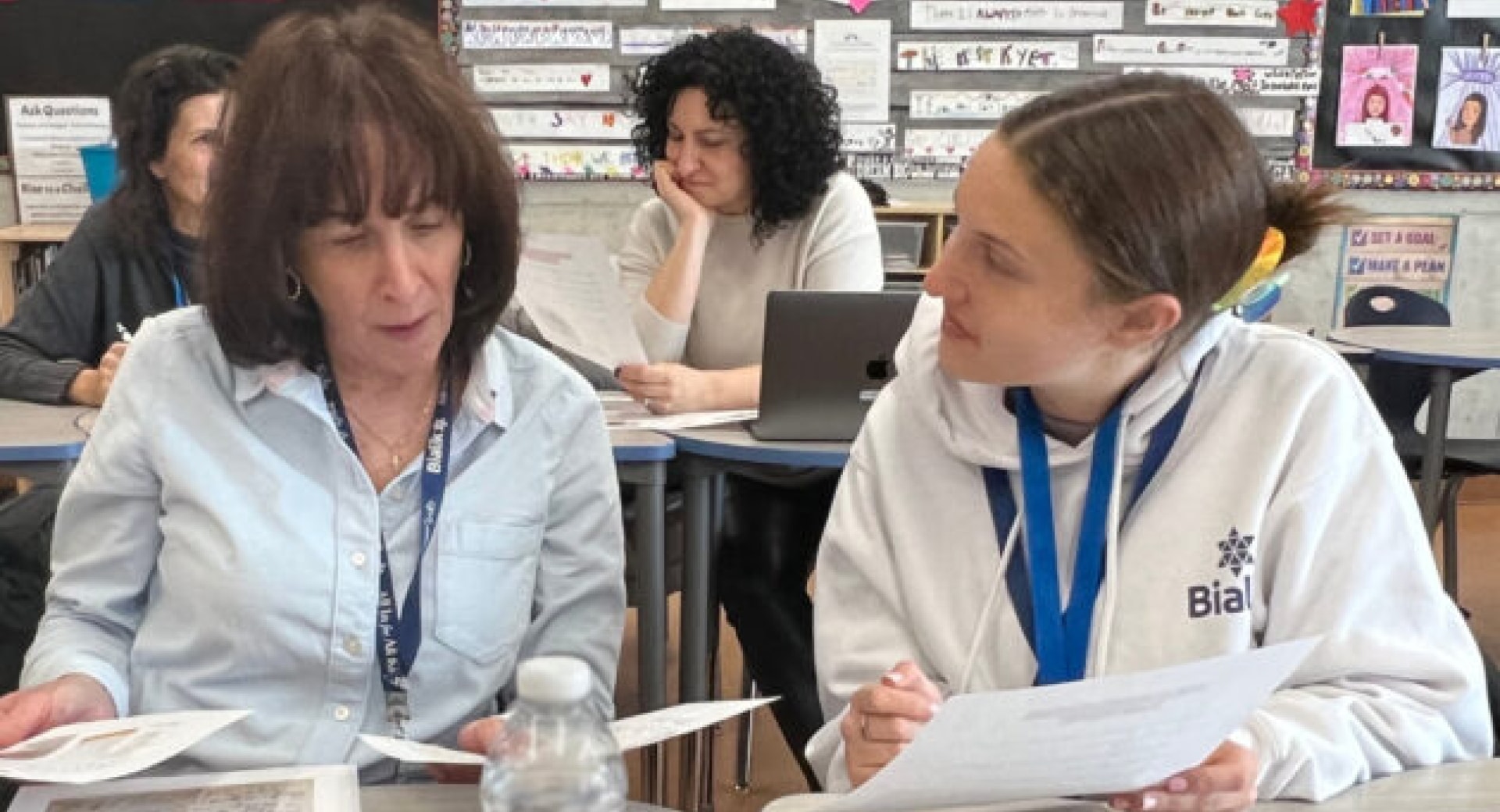
When I find myself in social settings outside of Bialik, I am often asked, “What is the key to Bialik’s success?” and “How do you have so many students?” Although the answer is, of course, multifaceted and there are many contributing factors, my immediate and top answer always rolls right off my tongue: “It’s our teachers.”
In my opinion, all teachers are incredible people. Devoting your professional career to raising the leaders of tomorrow and caring for other people’s children everyday is an honourable and selfless decision. The teacher’s day is long, well beyond the hours of the school day, and the challenges are endless. At Bialik, I consistently see our teachers rising to their tasks and taking their responsibilities one step further. Bialik educators go above and beyond to volunteer their time, work tirelessly to arrange special programs, and do everything they can to plan for the needs of their diverse learners.
A most recent example of Bialik teachers’ excellence was shown at our Best Practices Fair, a mini-conference held as part of our Professional Development days — it was led by the teachers, for the teachers. Prior to the February PD days, and knowing the wealth of knowledge amongst our teaching faculty, we put out a call to action, inviting proposals for workshops where teachers could share their lessons, skills and experiences with their peers. The response was incredible and resulted in an array of high-quality PD workshops led by 14 stellar educators. I was so impressed that I wanted to share this list of interactive workshops from our Best Practices Fair:
- Checklists and Organizers – Teachers’ Best Friends!
Presenters, Tamara Goldman and Kathy Schwartz, aimed to help teachers understand the importance of checklists and organizers in supporting a variety of student needs — not only for students with IEPs or those receiving resource support, but for all students as they develop executive function skills in organization, independence, task initiation and completion. - A Picture is Worth A Thousand Words (Literally)
Alex Barnes shared how he and the Grade 4 team have begun incorporating art reflection into their language program. This is a way for students to express their unique perspectives and also to further their understanding of the trait of voice and demonstrate their inferencing skills for reading comprehension. - Fluency Fun
Reading Specialist, Rochelle Robbins, held a hands-on workshop to help both English and Hebrew teachers improve the reading fluency of beginning and struggling readers. She shared some fun techniques, games and activities to allow students to boost their fluency skills. - Flexible Learning
Jewish Studies teacher, Michal Dinary, addressed the challenge of how to create differentiated, meaningful learning in a heterogeneous class. She proposed that flexible learning allows each student to find their own unique voice and understand that there are many ways in which they can advance, grow and succeed as they learn to choose the path that best suits them. - Jigzi 101 – How to Use Jigzi with Examples
Technology Integrator, Merav Anafi, explored the potential of Jigzi, a new platform for creating engaging, interactive activities, especially for language instruction, and teaching assistant, Michaela Levin, provided examples of how Jigzi is being used in our classrooms. - Problem Solving Skills: Highlighting a New SEL Recess Initiative
Faculty joined Jewish Studies teacher, Estelle Tastasa, to hear about a new SEL initiative at Viewmount providing Primary Division students with the opportunity to learn and practise problem-solving skills independently. - The Power of Words
Led by resource teacher Poppie Butler, this session was about shifting away from phonics and spelling instruction after Grade 3, and introducing students to morphology (the study of words and how they are formed). She included many ideas for interactive activities. - Choosing the Right Teaching Method in Math
Senior Division math teacher, Deborah Benhamu, addressed the question of when to choose different approaches — such as using manipulatives, visual representations and rote work — and how to use each of these at the right time to provide effective instruction for students’ needs. - Second language acquisition through co-teaching models
Resource teacher, Elvira Keilikhis and Jewish Studies teacher, Liza Hander, discussed the ways that co-teaching models increase the potential of second language skill development. - Second Language Acquisition Strategies for Different Learning Styles
Resource teachers, Yasmine Merri and Chen Pascoe, explored three learning styles — visual, auditory and kinesthetic — presenting compatible learning strategies for language skills and vocabulary and grammar acquisition.
As you can imagine, with all these workshop options, the Himel classrooms were buzzing with stimulating discussions amongst faculty and staff. Our administrative team was blown away by the quality of conversation, level of engagement and the learning that has now already been applied in our classrooms. We are so appreciative of the presenters for the time and effort they gave to their colleagues.
Our students are the beneficiaries of our teachers’ commitment to ongoing professional learning and growth. We feel fortunate to have a faculty of lifelong learners and reflective practitioners, and Bialik will continue to actively provide opportunities to promote their growth.
